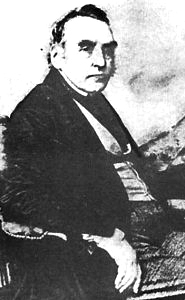|
The final part of a look at the British in India taking to the Nilgiri Hills.
(Continued from last fortnight)

John Sullivan
|
Shopping, another time-consuming activity, was more advanced here than one might have supposed. Sears Roebuck had produced their first mail-order catalogue in the United States in 1888. Within a decade several large department stores in Bombay and Calcutta had followed suit; and in Ootacamund you could order objects as large as a motor car or as small as a bottle of coloured ink by going through their catalogues and then simply writing a few lines to these companies.
The Christian faith flourished in these hills although, unlike the hills of Mizoram, Christians were never a large proportion of the total population. Two missions in particular sought converts here for a very long time: the Basel Evangelical Mission, a Swiss-German organisation that was more or less Lutheran, and the Missions-étrangeres de Paris, which was Roman Catholic. The latter group tended to work in the towns and on large plantations, while the former group were especially active in Badaga villages, and had their local headquarters in Ketti village.
There were other groups here too: the London Missionary Society, for example. Today, there may be about 4,000 Christians in a total population of three-quarters of a million, testament to the fact that the evangelical effort yielded scant results in terms of numbers. Yet the three organisations just mentioned were critical for the introduction of literacy to the district through their network of schools, a network that made the very first efforts at the education of girls and set up the first teacher training school; all this in the middle of the 19th Century.
Whatever we may think about the overall impact of the British on India, there is no doubt that they had a positive impact on the development of this particular district, for it was they who built the first towns and vehicular roads, the first markets, the first courts and post offices and administrative buildings.
But perhaps nothing is more evocative of the British impact on this one district than the way that they literally inscribed their names on the map. The Encyclopaedia* details 192 places that were given English names. Mostly these were minor features of the landscape: hills, copses (sholas), bogs, riding paths, lookouts, etc. But one such place is known across South India, and that is the military cantonment at Wellington. It was sited on land belonging to the Badaga village of Jagatala and, like many basic features of 19th Century development in this district, the idea had originated with the founder of Ootacamund and local Collector, John Sullivan (1788-1855), a Londoner of immense energy and far-sighted vision who transformed the entire Nilgiri Plateau with his many innovations.
The name given to Wellington is of obvious origin, for the Duke of Wellington was a national hero, an Anglo-Irishman who had won the Battle of Waterloo against Napoleon, and in later life had become the Prime Minister of Great Britain. What is not widely known about him is his intimate tie with the Nilgiris, for by some strange chance he was probably the first of the British we know of by name to have visited, indeed to have fought for several months, in the Nilgiri Wynad. This was in 1800-01, long before Waterloo, when he was still known as Arthur Wellesley, and when he was commencing the final military operations against a local warlord, Kerala Varma Raja, the "Pychy Rebel" as they called him. It was Wellington's field experience in the Nilgiri Wynad at that time, and before that as a commander in the Fourth Anglo-Mysore War, that had taught him the strategy he would later put to such good use at Waterloo.
In a technical sense the district was still prehistoric two centuries ago: it had no documents, no literacy, no schools, and scant connection with the outside world. So far as we know it had never been an integral part of any South Indian kingdom, and had certainly never been a princely state in its own right. All that changed with remarkable rapidity in the years that followed John Sullivan's arrival in 1819. Even the princes arrived to build their summer palaces there.
*Encyclopaedia of the Nilgiri Hills. (2 volumes. Edited by Paul Hockings. Manohar Publishers, New Delhi. 2012.)
(Concluded)
|